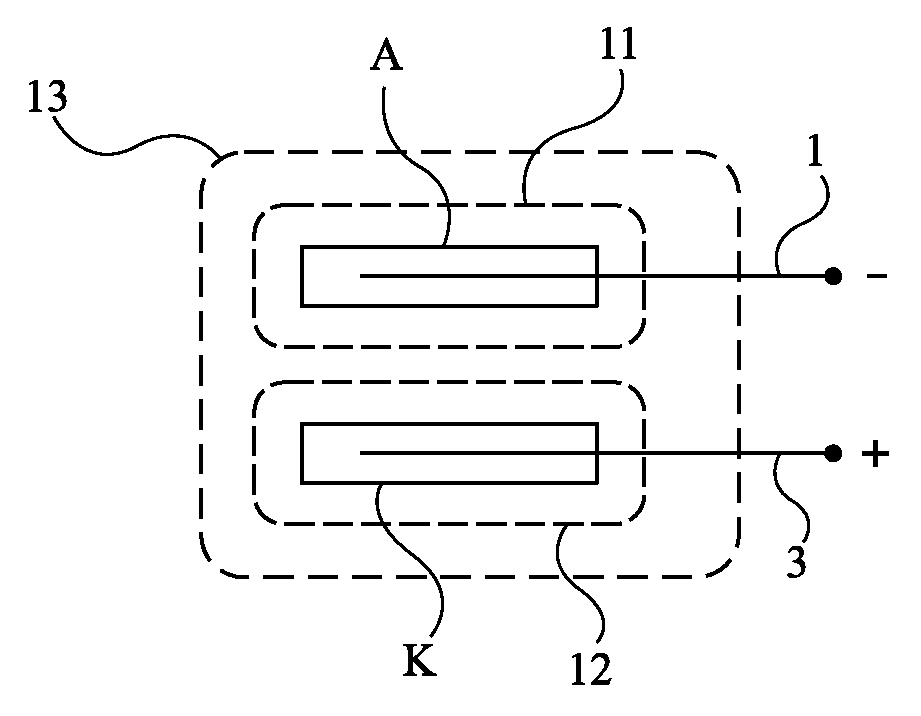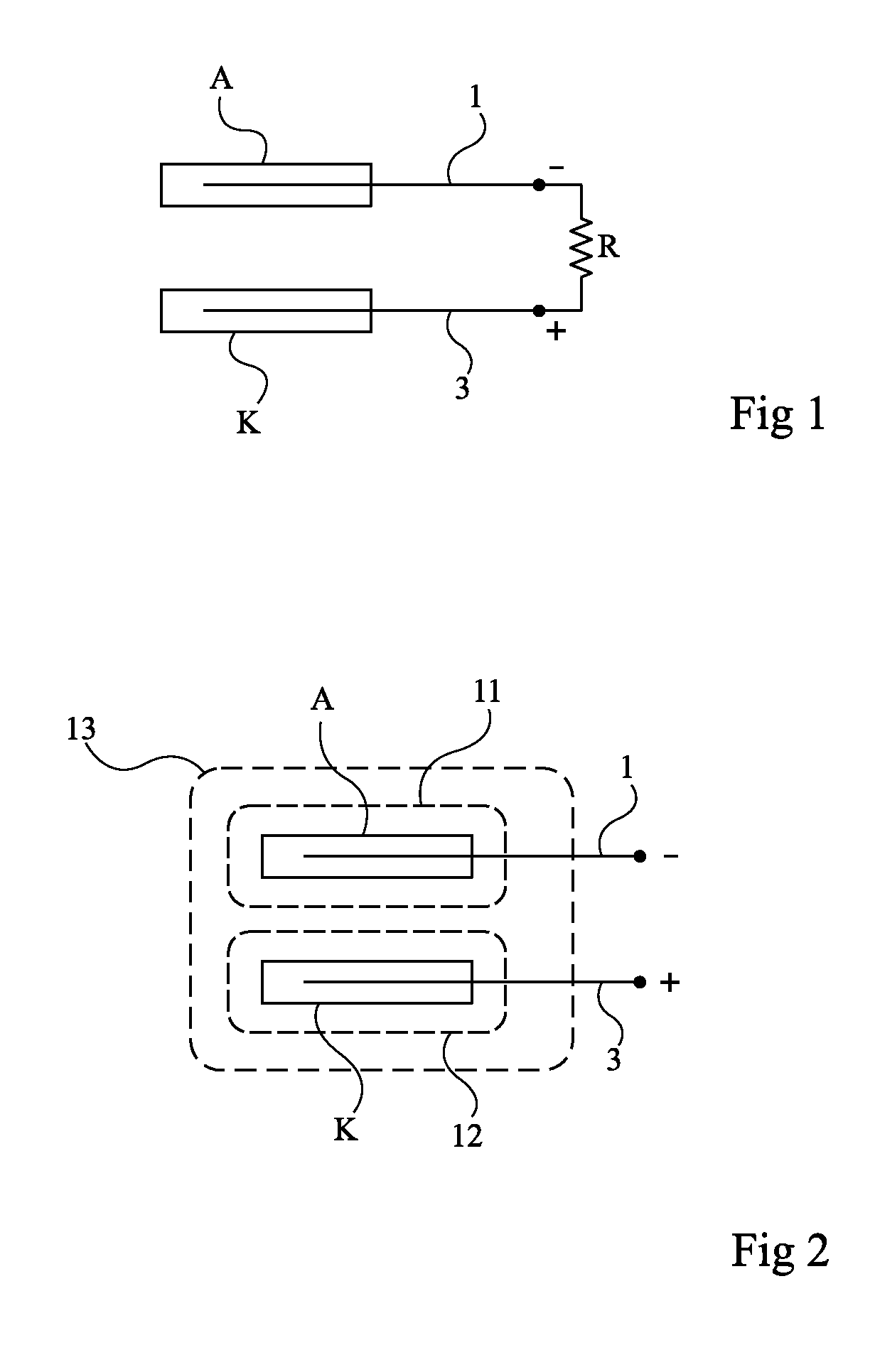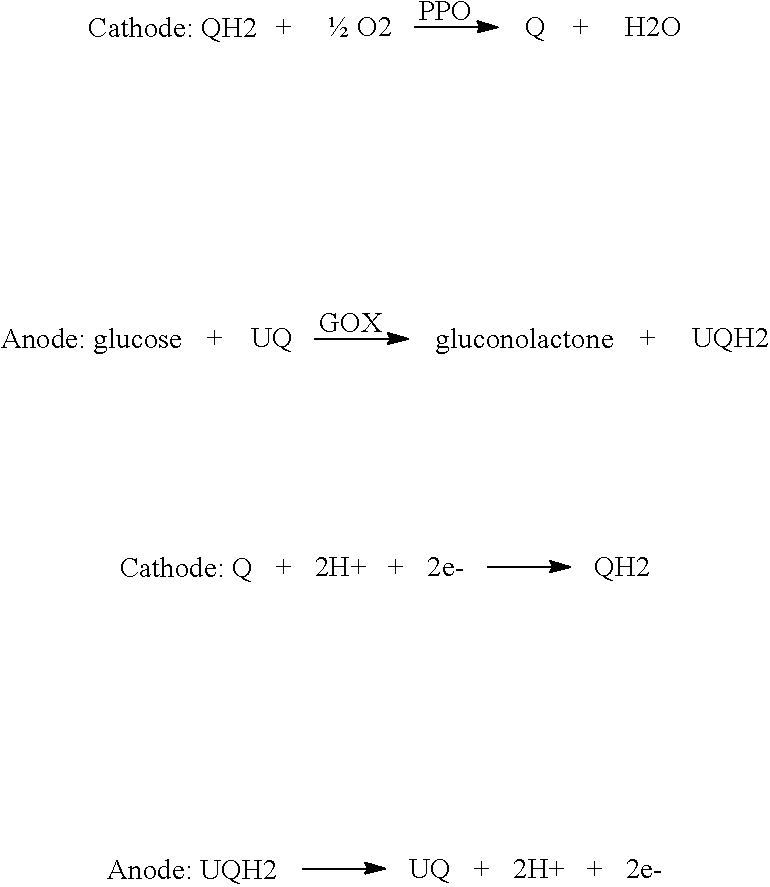Glucose biofuel cell
a biofuel cell and glucose technology, applied in cell components, electrochemical generators, enzymology, etc., can solve the problems of difficult, or even impossible, to implant such biofuel cells in living beings, and the life of biofuel cells using such electrodes is very short, so as to achieve the effect of convenient handling
- Summary
- Abstract
- Description
- Claims
- Application Information
AI Technical Summary
Benefits of technology
Problems solved by technology
Method used
Image
Examples
Embodiment Construction
FIG. 1 shows a biofuel cell connected to a load R. This biofuel cell comprises an anode body A and a cathode body K. The anode body is formed of a solid body comprising a conductive material associated with an appropriate anode enzyme and redox mediator. The anode body is solid with an anode wire 1. Similarly, the anode is formed of a solid body formed of a conductor associated with an appropriate enzyme and cathode mediator. The cathode body is solid with a cathode wire 3. The anode and cathode wires, for example, made of platinum, are shown as penetrating into the anode and cathode bodies; they may be simply glued to these bodies.
The anode body and the cathode body are preferably formed by compression of a powdery conductive material such as graphite mixed with the appropriate enzyme and redox mediator. A powder of a conductive polymer such as polyaniline, polypropylene, or polyvinylidene fluoride may also be used.
As an example, an anode has been prepared by mixing 350 mg of graph...
PUM
| Property | Measurement | Unit |
|---|---|---|
| Electrical conductor | aaaaa | aaaaa |
Abstract
Description
Claims
Application Information
 Login to View More
Login to View More - R&D
- Intellectual Property
- Life Sciences
- Materials
- Tech Scout
- Unparalleled Data Quality
- Higher Quality Content
- 60% Fewer Hallucinations
Browse by: Latest US Patents, China's latest patents, Technical Efficacy Thesaurus, Application Domain, Technology Topic, Popular Technical Reports.
© 2025 PatSnap. All rights reserved.Legal|Privacy policy|Modern Slavery Act Transparency Statement|Sitemap|About US| Contact US: help@patsnap.com



